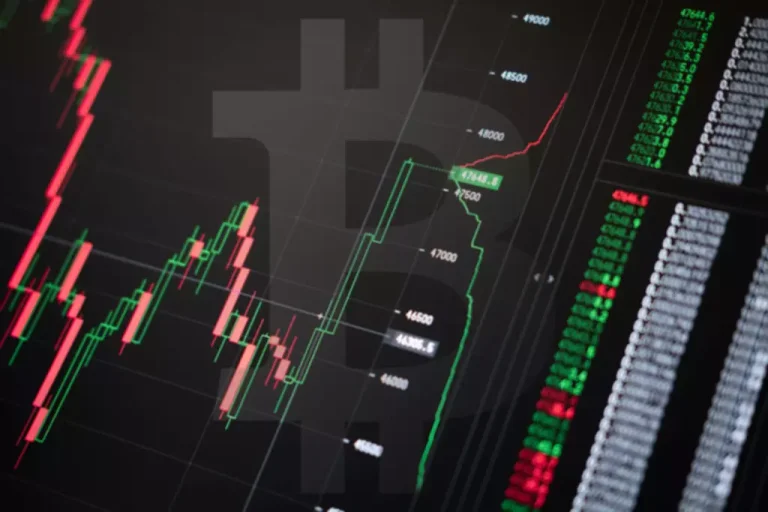However what are you able to do with this pile in a permissionless setting, where anybody can add liquidity to it? When you’re able to withdraw your assets, your liquidity tokens are burned (or destroyed), and in return, you receive a portion of the liquidity pool’s belongings primarily based on your share. Balancer allows for the creation of liquidity swimming pools with up to eight property with adjustable weights, offering more flexibility than Uniswap. The variety of liquidity tokens received by a liquidity supplier is proportional to their contribution to the pool.
And in 2018, Uniswap, now one of many largest decentralized exchanges, popularized the overall concept of liquidity pools. When someone sells token A to buy token B on a decentralized exchange, they rely on tokens within the A/B liquidity pool supplied by other users. When they buy B tokens, there will now be fewer B tokens within the pool, and the value of B will go up. There are some particular the place utilizing liquidity swimming pools might have more monetary risks than security risks. Although there are specific situations the place swimming pools for various monetary actions could have extra dangers than others.
- Liquidity swimming pools enable DEXs like Uniswap and SushiSwap to facilitate token swaps with out counting on traditional order books.
- Now that you have been edified on liquidity swimming pools, you ought to be extra prepared to make knowledgeable selections whenever you use DEXs.
- A liquidity pool is principally funds thrown collectively in a big digital pile.
- Additionally, yield farming rewards, corresponding to governance or staking tokens, offer another earning layer.
- Locking up some crypto away to conveniently present investors with the mandatory property is an innovation that strengthens networks.
In this traditional mannequin, a market maker creates markets by shopping for and selling crypto instantly from crypto merchants. This incentive construction has given rise to a crypto funding technique generally known as yield farming, where customers move assets across different protocols to profit from yields before they dry up. Platforms like Uniswap and Balancer offers users turnkey forex solutions with the power to create liquidity pools. Notice that the success of yield farming is usually depending on market situations and the efficiency of the underlying assets.
The rewarding earnings gathered from liquidity mining can either be high or low relying on the amount of risk involved in the protocol. Liquidity swimming pools have already got reserves of the crypto pair you wish to trade, permitting for sooner, trustworthy trade. The cryptocurrency market is a really energetic community that initiates thousands of transactions to be verified daily, however verifying transactions could be fairly gradual.
The bigger the liquidity pool, the much less impression massive trades could have on the asset’s value, contributing to a more steady and environment friendly market. The BTC-USDT pair that was originally deposited would be incomes a portion of the charges collected from exchanges on that liquidity pool. In addition, you would be incomes SUSHI tokens in exchange for staking your LPTs. SushiSwap (SUSHI) and Uniswap are frequent DeFi exchanges that use liquidity swimming pools on the Ethereum network containing ERC-20 tokens. In other words, customers of an AMM platform provide liquidity swimming pools with tokens, and the worth of the tokens in the pool is decided by a mathematical formulation of the AMM itself.
What Are Liquidity Pools? An Intro To Offering Liquidity In Defi
Essentially, sensible contracts are automated market makers (AMMs) that take away the necessity for a conventional order book. For developers, liquidity pools present a way to create decentralized liquidity, enabling any dApp that requires it. When DEXs had been first invented, they encountered liquidity issues as they tried to mimic traditional market makers.
Smart contracts, while revolutionary of their capability to automate transactions on the blockchain, come with inherent risks and vulnerabilities. These digital agreements are vulnerable to coding errors, resulting in unintended penalties and financial losses. Vulnerabilities corresponding to reentrancy attacks, unchecked external calls, and integer overflow may be exploited by malicious actors, compromising the integrity of the contract. Effective algorithms and good contracts allocate charges proportionally, contemplating factors like liquidity contribution and duration.
There are many various DeFi markets, platforms, and incentivized pools that allow you to Financial cryptography earn rewards for offering and mining liquidity through LP tokens. So how does a crypto liquidity supplier choose the place to place their funds? Yield farming is the apply of or locking up cryptocurrencies inside a blockchain protocol to generate tokenized rewards. The concept of yield farming is to stake or lock up tokens in varied DeFi purposes to find a way to generate tokenized rewards that help maximize earnings. This type of liquidity investing can mechanically put a consumer’s funds into the highest yielding asset pairs. Platforms like even automate steadiness risk alternative and returns to move your funds to various DeFi investments that provide liquidity.

Liquidity Pools For Beginners: Defi One Hundred And One

A liquidity pool is a collection of digital property accumulated to allow buying and selling on a decentralized trade (DEX). They are created when users lock their cryptocurrency into good contracts that then allows the tokens to be used by others. Liquidity swimming pools have emerged as a pivotal innovation, reworking how belongings are traded and managed. By leveraging blockchain technology and smart contracts, liquidity swimming pools offer a decentralized, efficient, and inclusive different to traditional financial techniques. This article explores the intricacies of liquidity swimming pools, their advantages, key components, real-world applications, risks, and future developments. The process is facilitated by automated market makers, which allow permissionless and automatic trading regulated by algorithms.

Liquidity swimming pools are the backbone of DeFi, enabling decentralized buying and selling, lending, and yield era with out relying on centralized intermediaries. They present continuous liquidity, guaranteeing easy and efficient cryptocurrency liquidity provider transactions throughout numerous protocols. By permitting customers to contribute assets, liquidity pools democratize market-making, giving individuals the opportunity to earn fees and rewards.
The fascinating factor about the high demand for LP tokens is that you could take them to other DeFi platforms. When you turn out to be an LP in a liquidity pool, you receive a proportional payment for supplying liquidity for trades, based on your share within the pool. Though the DEX liquidity pool is the most known kind, there are liquidity swimming pools for so much of different financial activities.


